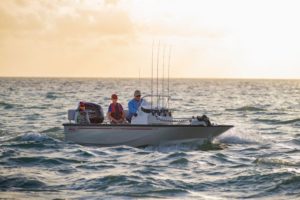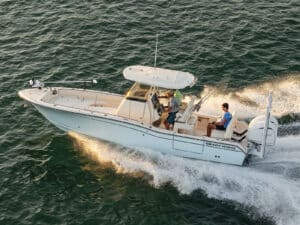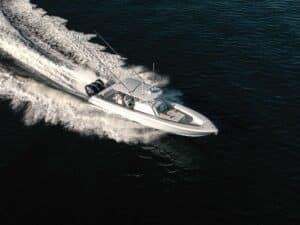The thought of purchasing a new fishing boat always sounds tempting, but for many would-be buyers, the timing might not be right. If the propulsion system on your current boat is growing tired, however, the timing might be right for fresh horses.
Repowering a boat is a great way to extend the life of a fishing machine. Yet there’s more to consider than just bolting on new engines. You need to figure out how much it costs to repower your boat, and weigh a number of additional options. Here are 10 questions to ask yourself or your dealer, with answers offered by outboard experts.

Should I change horsepower?
“Look at the boat’s capacity plate to learn the maximum rated horsepower,” says David Meeler, marine-product information manager for Yamaha Outboards. “That’s the horsepower you should put on your boat during a repower, no matter what you had before.”
Boats perform at their best with the maximum rated horsepower, Meeler points out. Plus, you’ll often get the best fuel economy because the engine is not struggling. “Just because you have the horsepower doesn’t mean you have to use it all of the time,” Meeler adds. “But it’s nice to have it handy when needed, such as when powering over a big wave.”
Should I change engine brands?
The biggest reason to change is unhappiness with your current brand, be it related to performance, local dealer service or warranty terms. If you’re satisfied with all three, there’s little reason to change brands. If you do plan to switch, check out the local dealer and make sure you’re comfortable with the available service, the product and the warranty.

Should I change the number of outboards?
Changing the number of outboards is not a good idea, says Evinrude product manager Jason Eckman. “It’s very complex and involves lots of fiberglass work to prep the transom for such a drastic switch,” he says. “Also, adding another outboard can add too much weight to the stern, or the transom might not have enough width or structural support to accommodate another engine.”
If you want to go from a single to twins for offshore safety, that issue is hardly relevant today. “Reliability of today’s outboards is such that you should not be afraid to go 30 to 40 miles offshore with a single outboard,” says Meeler.
Should I get new controls and instruments?
It’s a good idea to update everything — steering, throttle and shift, cables, electrical harnesses, battery cables, and instruments, says Larry Teeling, product category manager for Mercury Marine. Consider the steering. “Why struggle with an old, worn steering system with your new outboard?” Teeling asks. Similarly, a new engine with old controls and gauges will only dampen your experience.
Digital instrumentation has also come a long way in the last 10 years, Teeling says, offering information that old gauges could not provide, such as fuel consumption and best speed for fuel efficiency.
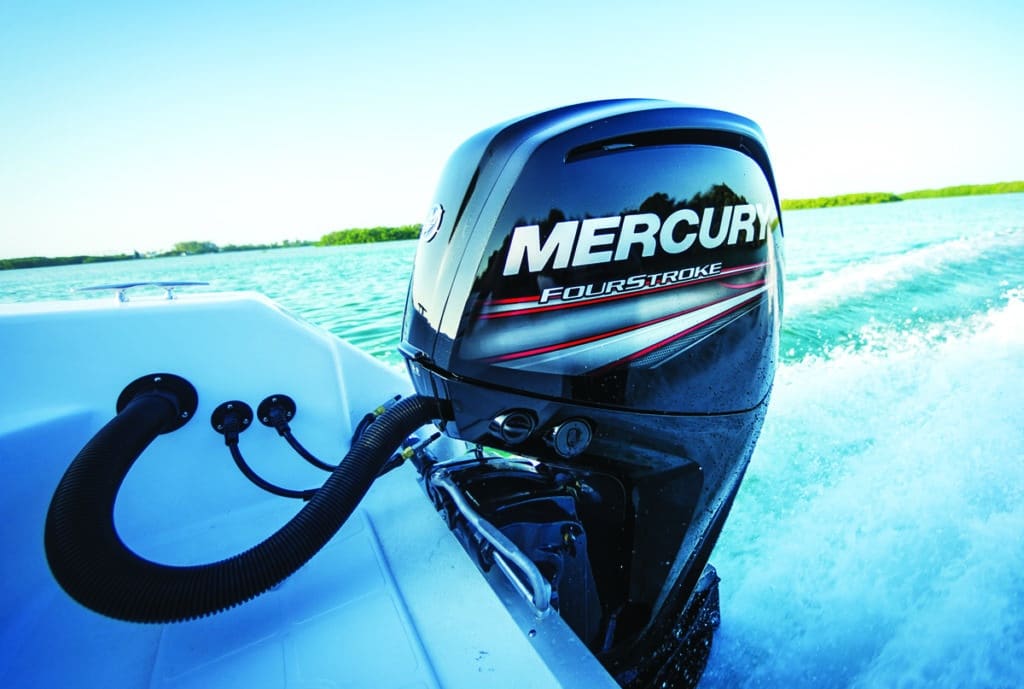
Should I change to another outboard technology?
The technology aspect of a repower has become less impactful over time, contends Teeling: “In the early 2000s, four-stroke outboards were associated with being heavier and requiring more maintenance than two-strokes. That’s no longer the case.” As two- and four-strokes approach parity in terms of weight and maintenance, the key is to select an outboard technology that makes your boat perform the way you want and maximizes its value, says Teeling.
Can I add a joystick control as part of a repower project?
Joysticks offer intuitive, slow-speed steering, allowing anyone to dock a boat like a professional captain. While original-equipment manufacturer systems with joystick controls, such as Yamaha’s Helm Master and Mercury’s Outboard Pilot, are not available for aftermarket installations, SeaStar Solutions Optimus 360 power-steering system (which includes a joystick control) can be added to an existing boat.
The decision to add it as part of a repower project boils down to three factors, says David Greenwood, product planning manager for Suzuki Marine. “First you need to have multiple outboards, as such systems won’t work with a single engine,” Greenwood points out. “Secondly, consider your experience level and the size of your boat. If you lack experience in docking a relatively large boat — say over 30 feet in length — in tight quarters, a joystick can be very helpful.”
The third factor is the price, Greenwood says. An Optimus 360 system can range from $18,000 to $22,000, plus installation costs. “Is the benefit worth the investment?” Greenwood asks. “Only the boat owner can answer that.”
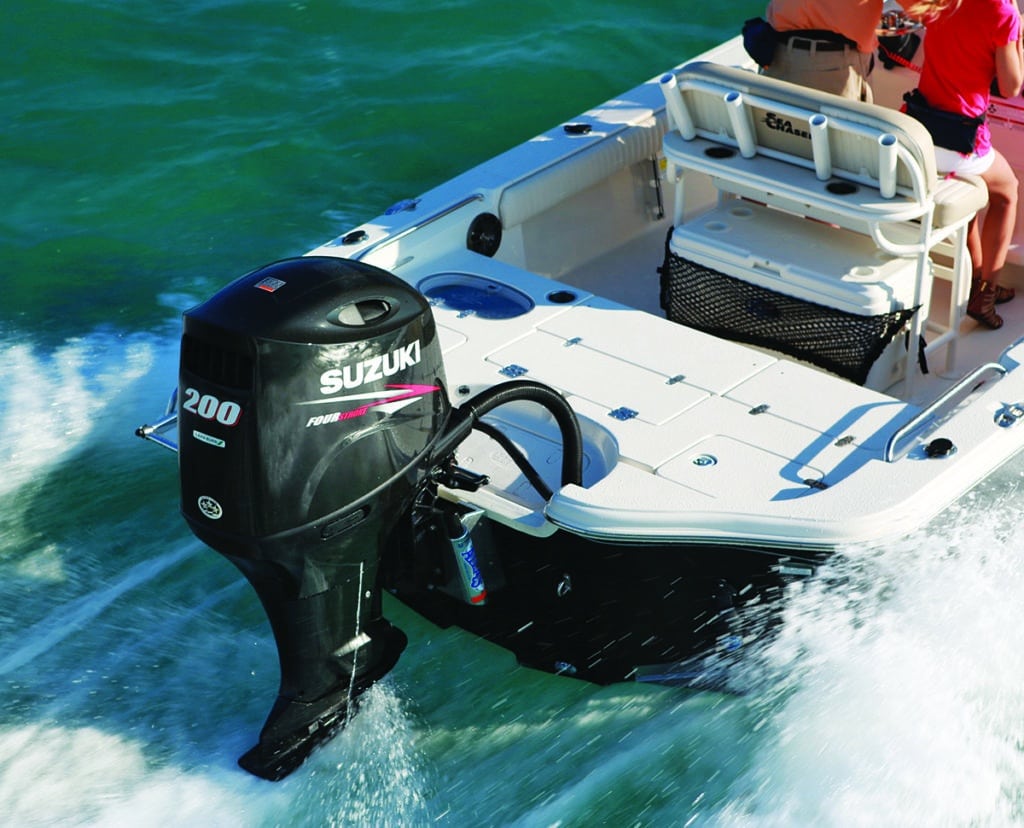
Should I install new fuel-system components?
The short answer is a resounding yes, says Yamaha’s Meeler. “I recommend that boaters replace all of the boat’s fuel hoses with new Coast Guard-approved, ethanol-resistant hoses with every repower, if not more often,” he says. “This is also the time to make sure you have a 10-micron water-separating fuel filter for each engine.”
If you’re upgrading to higher horsepower, check the engine manufacturer’s specifications to ensure that you install a fuel hose and fittings with inside diameters (e.g., ⅜ inch) sufficient to sustain the engine’s fuel needs at wide-open throttle. A fuel line or fitting that’s too small can starve the engine of fuel at the upper rpm range, not only hampering performance, but also leaning out the fuel-to-air ratio, a condition that can damage an engine.
Will my old battery system be sufficient?
The answer depends on which engine you choose. Some outboards with integrated power-steering systems and high-pressure fuel-delivery systems may require a more robust battery system. Check the engine manufacturer’s specifications or ask your dealer.
“You should also replace the old battery cables with fresh ones,” says Evinrude’s Eckman. Old cables might be corroded inside, causing too much resistance, lowering the voltage delivery, and increasing amp draw to excessive levels.

Which color should I choose?
Evinrude, Mercury and Suzuki each offer color choices in their outboard lineups. Yet color is mostly cosmetic, says Mercury’s Teeling: “Matching the color of engines to the boat has become quite popular.” In warmer climates where water spots develop quickly, white outboards are more popular, says Suzuki’s Greenwood. “White does not show water spots as much as a darker outboard will,” he observes.
What should I do with my old engine?
You can advertise your old engine for sale, but your main stumbling block will be moving a large, heavy outboard off your boat and onto the buyer’s boat. This is where a dealer can help, according to Sara Pines, public relations director for Honda Marine. “Consult with your local dealer about your old engine,” Pines says. “Often, they are willing to assist you in the selling of the old engine.”
Finally, the most important question to ask yourself is, “How long do I plan to keep my boat?” The cost of new power, related upgrades and installation charges can range from $10,000 to $80,000 or more. “For that kind of investment, plan on keeping your current boat for the next 10 years at least,” says Evinrude’s Eckman.
Yamaha’s Meeler echoes that sentiment. “The first thing I ask anyone who comes to me with repower questions is, ‘How much do you love your boat?’” he says. “The answer will help you determine what the future holds — new power or a whole new boat.”

